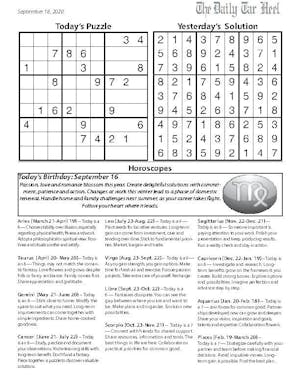The Great Gatsby
???1/2
F. Scott Fitzgerald’s snapshot of a generation riding the post-prohibition wave of booze and materialism into the cliffs of the Great Depression has once again been brought to the silver screen – this time in dazzling 3-D by filmmaker Baz Luhrmann.
This certainly isn’t your parents’ Gatsby. A soundtrack executively produced by Jay-Z featuring artists such as Florence and the Machine and will.i.am represents Luhrmann’s vision to breathe new life into a timeless classic.
The stunning visuals of 1920s New York and the glamour of parties at the Gatsby mansion are seductive and inviting, but at its core The Great Gatsby is a work about ambition and self-discovery.
The film opens on a gloomy snow-covered estate as Nick Carraway (Tobey Maguire) begins his account of that fateful summer in the office of his psychiatrist.
It is in that office where the alcoholic Nick is encouraged by his doctor to write as a form of therapy. Luhrmann’s departure from the text with the use of this framing device adds a layer to the story that encourages the audience to identify with the narrator and his experience.
The words of the text take on a new life as they float across the screen in 3-D. Nick explains he was both “within and without,” uncovering the mysteries of East and West Egg and observing the lives and secrets of those around him.
Carey Mulligan’s portrayal of Daisy Buchanan is mousy yet affectionate, and the intimate onscreen moments shared with Leonardo DiCaprio — who played Jay Gatsby — are a touching crescendo to the longing that Daisy expresses at the very mention of “Gatsby? What Gatsby?”
While the easily identifiable and iconic symbols of the text, such as the green light and the watchful eyes of Dr. T.J. Eckleburg, are present in the film, Luhrmann uses other small details to heighten the drama and mirror the content of the story.
A ringing phone interrupts at several points throughout the movie, creating a feeling of uneasiness among the characters and signifying the tension of secrecy. The grease-slicked and perfectly placed haircuts of the males always seem to become slightly disheveled when their true natures are exposed through their carefully constructed facades.
Luhrmann’s Gatsby becomes increasingly mortal and less myth throughout the film, and DiCaprio portrays this evolution skillfully during a tension-filled moment in the hotel scene. In another departure from the text, Gatsby screams and grabs Tom Buchanan wildly in an outburst of anger, shaking and full of rage. Nick’s timely narration describes the look of Gatsby in that moment “as if he had killed a man.”
The key to appreciating Luhrmann’s film is to forget predisposed notions from a high school reading assignment and become immersed in the opulence and vivid imagery to which only a modern adaptation can aspire. Though difficult as it may be to adapt a beloved book while pleasing the critics, the final product is at least deserving of a raised glass and an understanding smile.
To get the day's news and headlines in your inbox each morning, sign up for our email newsletters.



